↓ Proceed Looking through To See This Remarkable Movie
The stark contrast among brilliant yellow and midnight black is eye-catching, in particular when it adorns an elegant fowl hopping on branches or flitting all over bushes. Several chook species element colourful plumage in North America. Explore 11 wonderful yellow and black birds and find out about their spots, habitats, and habits.
American Goldfinch
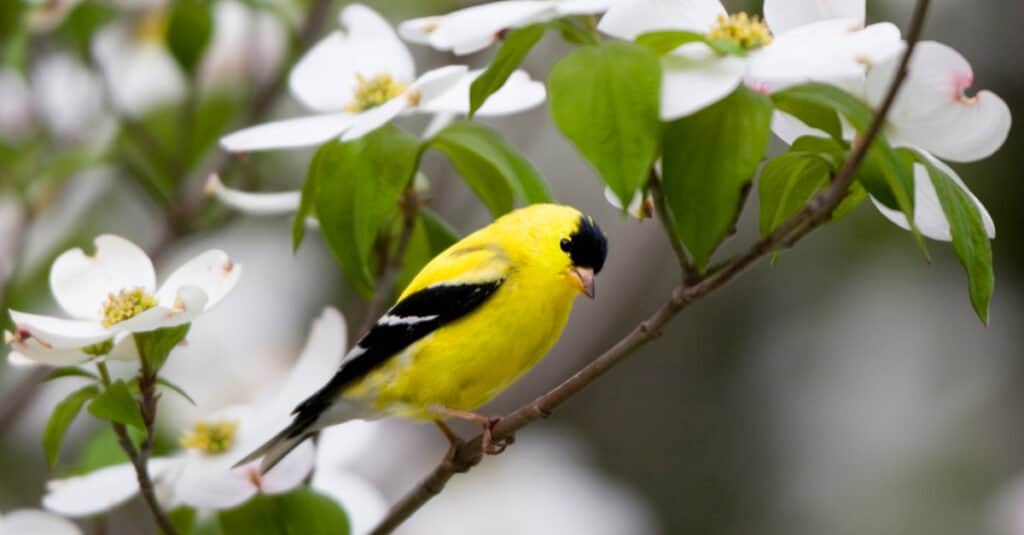
©Danita Delimont/Shutterstock.com
The American goldfinch is widespread in North The usa, ordinarily about suburban chicken feeders. They breed in Southern Canada and the Northern United States and wintertime in the southern fifty percent of the United States and Mexico. On the other hand, there are pretty a several 12 months-spherical residents in the US. This species prefers open weedy parts, like fields, floodplains, parks, and backyards. You can spot them with their shiny yellow plumage, black foreheads, and black wings. Their wings also have light white barring.
Yellow-Headed Blackbird
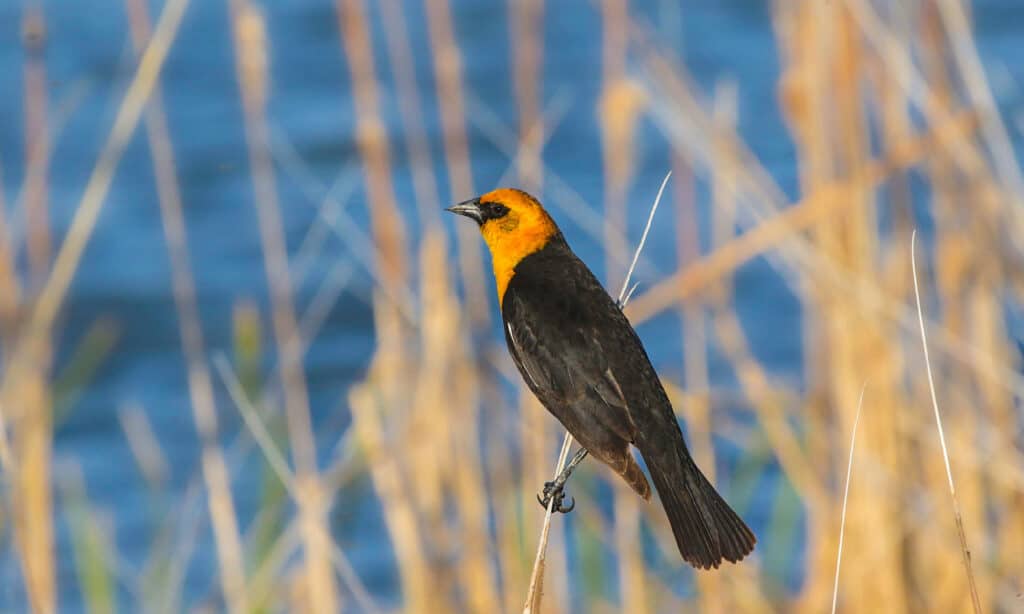
©iStock.com/Nancy Strohm
The yellow-headed blackbird is tricky to ignore. With their all-black bodies, golden yellow heads, and rusty calls, this is not a species you will very easily fail to remember. They are a acquainted sight for the duration of summers in the Central and Northwestern United States. These short-length migrants spend winters in the Southwest and Mexico. They breed in damp prairies, mountain meadows, and marshes, nesting in tall cattails close to the red-winged blackbird. They form big flocks in the winter season to forage in fields, ranches, and farms.
Frequent Yellowthroat
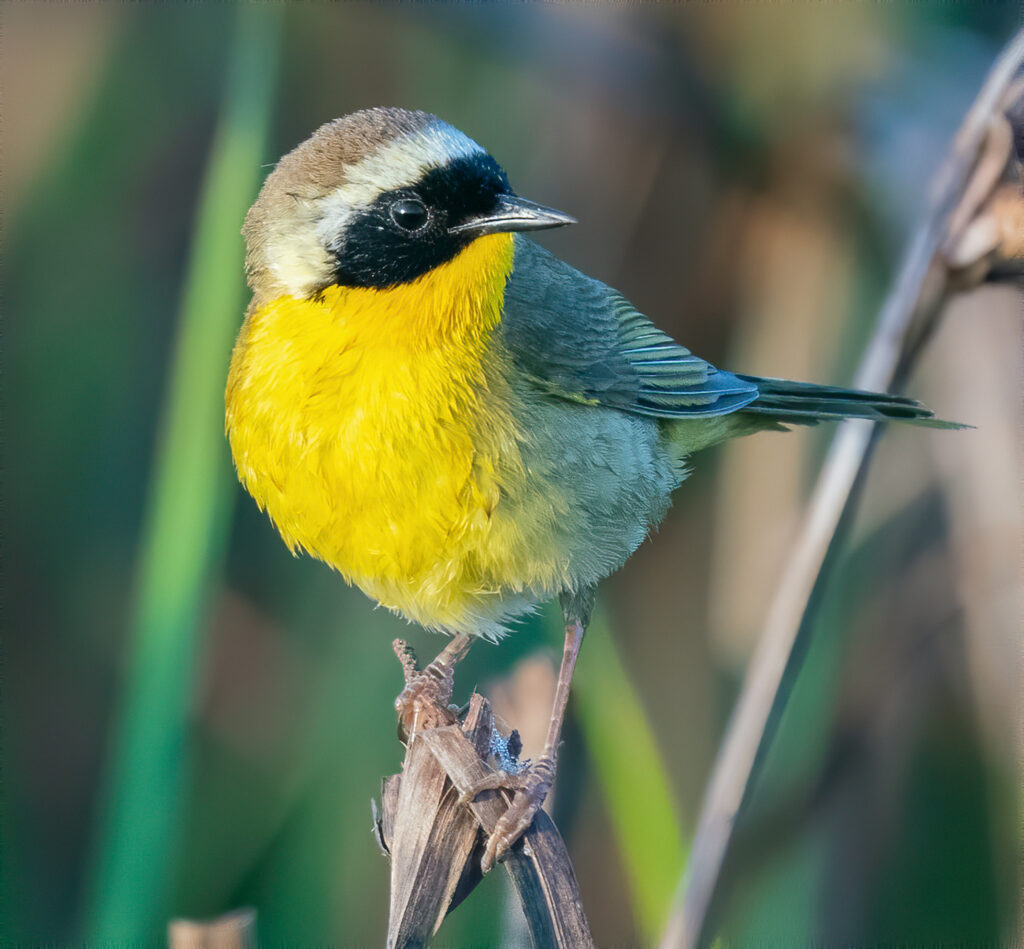
©DC Wildlife Pictures/Shutterstock.com
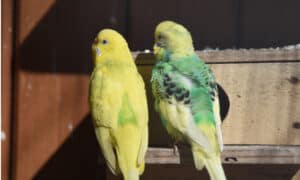
If you see a vocal minimal chicken with a black facial area mask hopping by way of dense tangles, you have spotted the common yellowthroat. These birds are olive with dazzling yellow throats and breasts. And their black eye mask is offset by a blurry white line that separates the encounter from the head. The common yellowthroat is considerable throughout North The usa, breeding in Canada and the US and wintering in Mexico and Central The united states. Nevertheless, it is absolutely absent all over most of the Southwest. They stay in several habitats, this kind of as prairies, pine forests, and wetlands, preferring to skulk by means of dense, tangled vegetation.
Lesser Goldfinch

©iStock.com/Sunil Singh
The lesser goldfinch is an inhabitant of scrubby habitats of the West. Most populations reside permanently together the west coastline and the Southwest, while many others breed in much more northern regions (Colorado, Idaho, and so forth.) and winter in Mexico. There are also yr-spherical inhabitants in Central and South The united states. They like patchy, open up regions, like thickets, scrubland, weedy fields, and forest clearings. They are about the exact same dimensions as the American goldfinch but function duller plumage in some places in close proximity to the coastline. Males have shiny black plumage earlier mentioned and vivid yellow down below with black heads.
Scott’s Oriole

©Agami Picture Company/Shutterstock.com
Scott’s oriole is a vividly contrasting bird of the dry Southwest. They are long and slender with black heads, backs, wings, and chests, and yellow undersides. They also have white barring on their wings. This species spends its springs and summers in the Southwestern United States and winters in Mexico. They live in arid mountains, foothills, and deserts, where by their bright yellow feathers stand out versus the stark neutral qualifications. Scott’s oriole is frequently linked with yucca, wherever it forages and weaves its nests.
Eastern Meadowlark
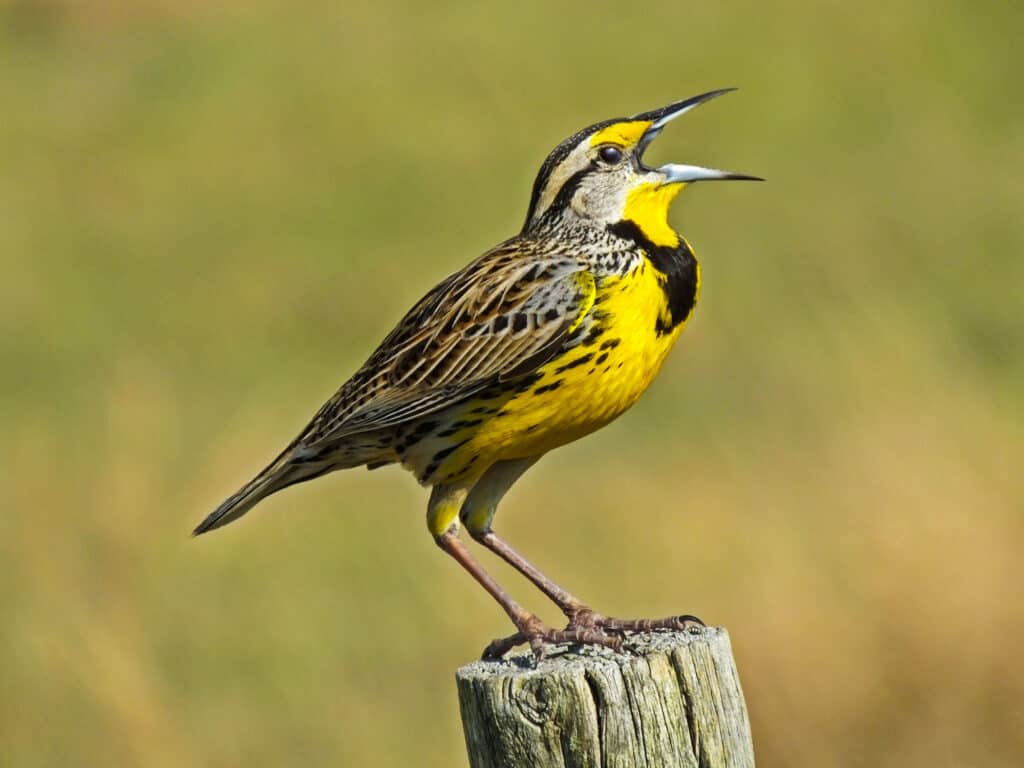
©iStock.com/enthusiasm4nature
Quite a few black and white birds reside in the west, but the japanese meadowlark adorns grasslands and farms through most of the japanese half of the United States. They stay in their environments year-spherical, apart from for the very northern populations that shift south for winter season. You can find them in prairies, pastures, grasslands, and fields, wherever they stalk thick vegetation and nest on the floor. You can determine them by their streaky buff, black, and reddish-brown upperparts and vibrant yellow underparts. They also have pretty distinctive black V designs throughout their chests.
Night Grosbeak

©Danita Delimont/Shutterstock.com
The night grosbeak is a wintering bird all through most of the United States. They include splashes of shiny color to winter season backgrounds. Some populations, specifically all those in the Northwest and Canada, continue to be permanently in their environments. They inhabit mature coniferous forests but will also quit by city and suburban locations. These massive finches have thick, conical expenses and a combine of grey, black, white, and yellow plumage. Seem for their well known white wing patches and yellow stripes higher than their eyes.
Hooded Warbler
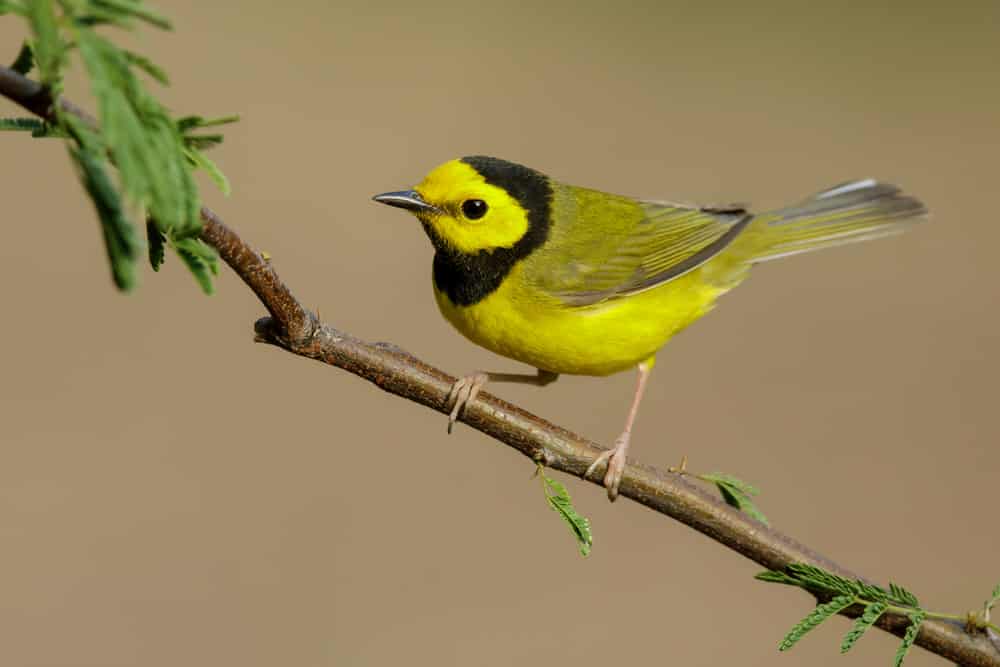
©Agami Picture Company/Shutterstock.com
The hooded warbler is easy to establish with its olive-yellow and gray plumage and yellow faces with black hoods and throats. This hen breeds in jap forests in the United States and migrates across the Gulf of Mexico right before reaching its wintering grounds in Central America. They dwell in the dense understory of mature deciduous forests. You can also find them in lowland tropical forests in Central and South America.
Prairie Warbler
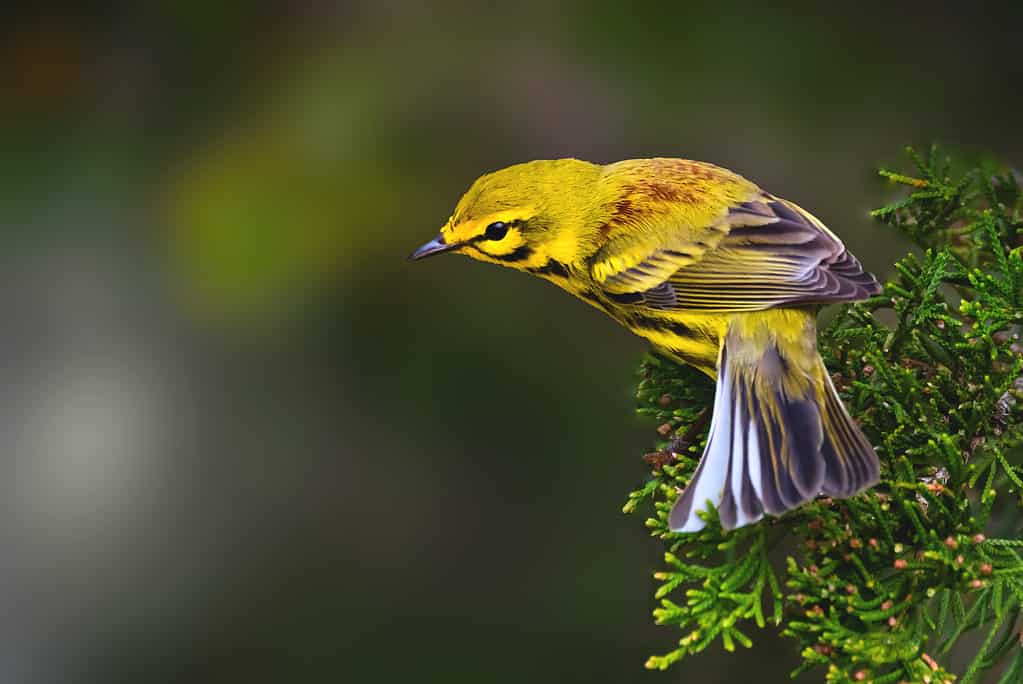
©Jay Gao/Shutterstock.com
Appear for the streaky yellow prairie warbler in scrubby forests of the Southeastern U.S. Following shelling out their summers in the hot, humid Southeast, they make their way to the West Indies for the winter. Nonetheless, there are lasting people in Florida. They dwell in the open canopies of shrubby, next-growth forests, besides for the Florida subspecies, which inhabit mangrove forests. Males are shiny yellow with large black streaking and chestnut patches on their backs. They also have black half-circles less than their eyes. They are tiny warblers with point charges and extensive, slender tails.
Western Tanager
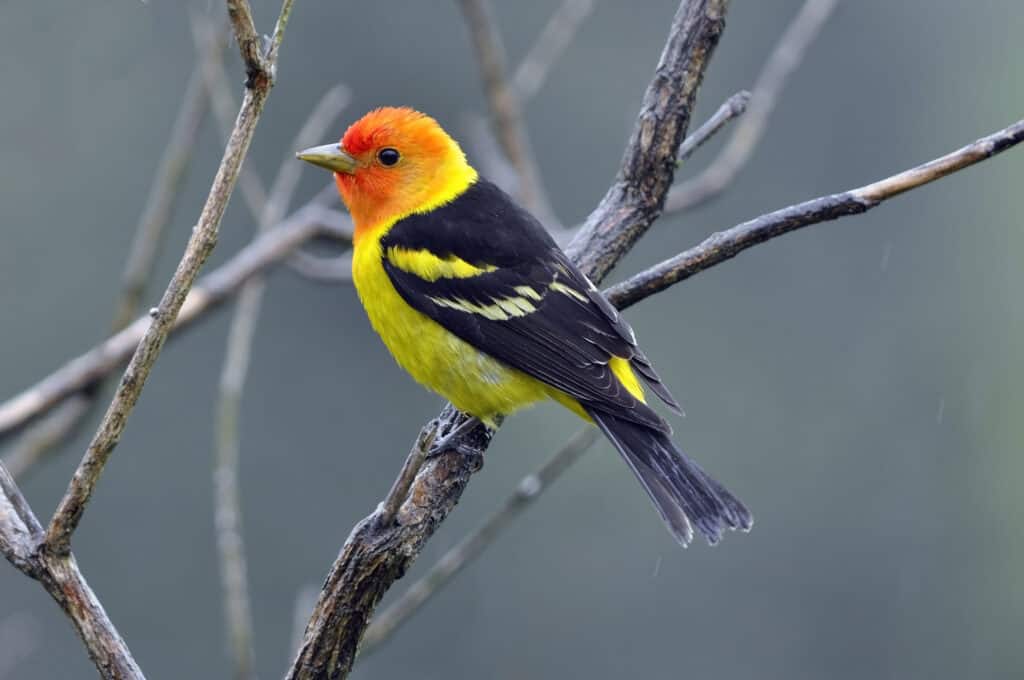
©Laura Mountainspring/Shutterstock.com
Western tanagers glance like flashes of orange and yellow flames as they flit all-around open up woods. You will find this species in the western half of the United States and Canada throughout spring and summer season and in Mexico and Central The us all through winter season. Listen for their small chuckles in open up coniferous woodlands, in which they like to remain concealed in the cover. Nevertheless, when you do location a person they are unmistakable. Glimpse for their vibrant orange faces, yellow bodies, and black wings.
Wilson’s Warbler
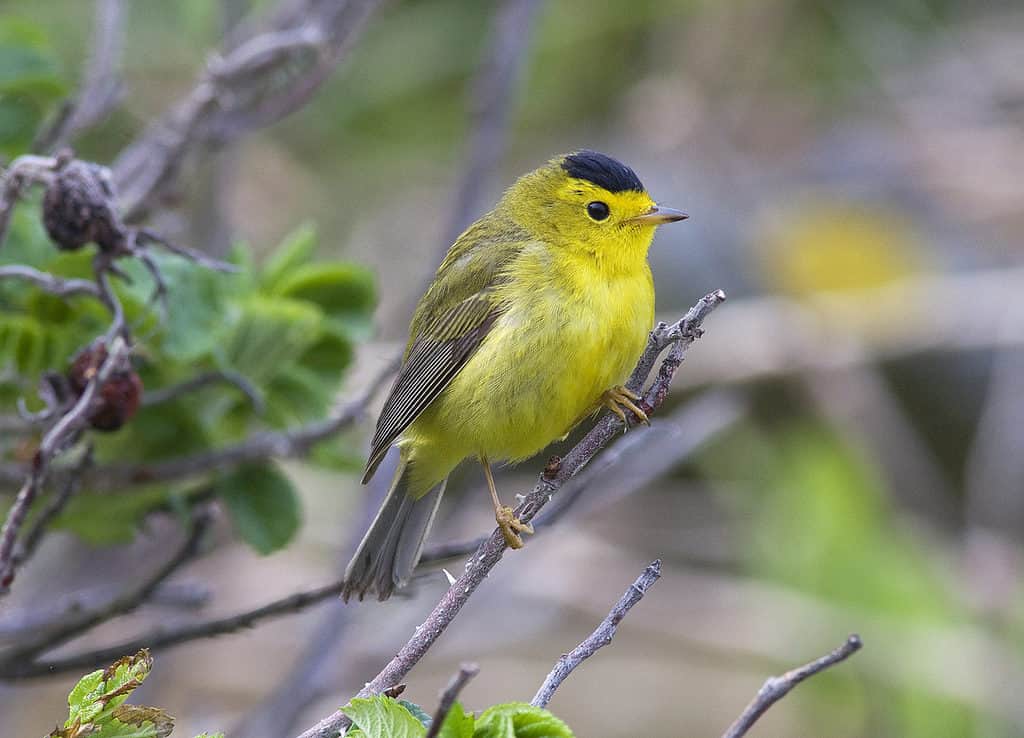
©iStock.com/Leon Gin
The Wilson’s warbler is an additional black and yellow fowl that is straightforward to identify. They have yellow bodies, streaky gray wings, and outstanding black caps, offering them the overall look of possessing a excellent patch of black hair on their heads. They breed in Canada and migrate throughout the United States just before achieving their wintering spot in Mexico and Central The united states. You will locate these birds in willow and shrubby thickets and forest edges or openings. They may possibly even inhabit high-elevation cloud forests in their wintering habitats.
